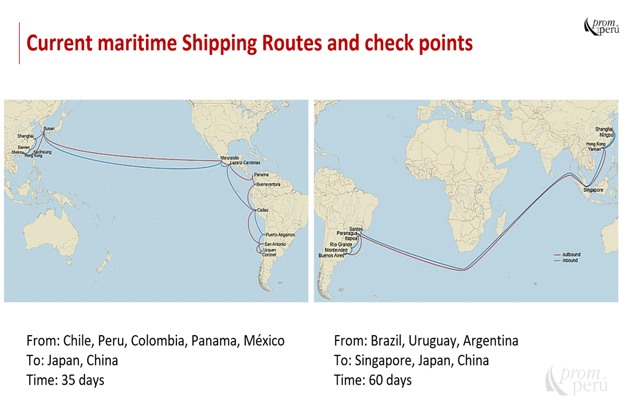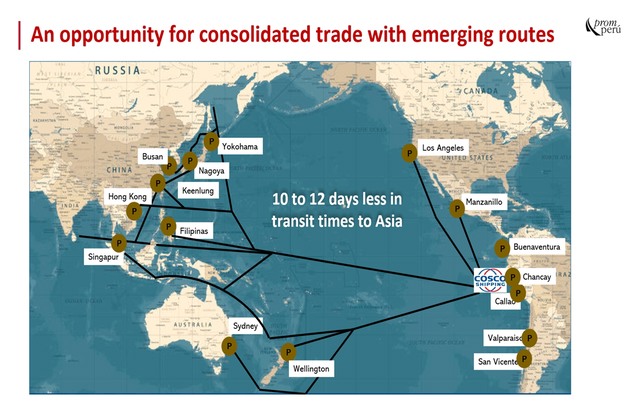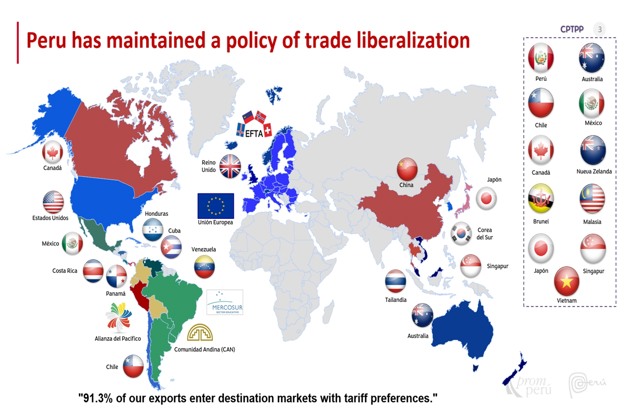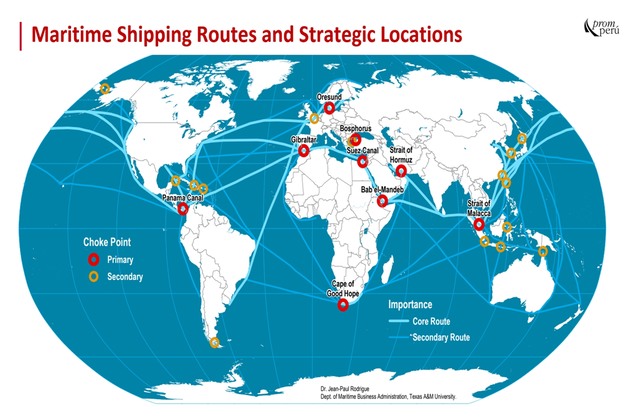Peru is set to become a major player in international logistics with the imminent inauguration of the port of Chancay, an infrastructure that promises to significantly reduce shipping times and logistics costs for exports from South America to Asia. Sayuri Sakihama Meléndez, deputy director of trade promotion at PromPerú, highlighted in a recent interview how this project will transform the outlook for Peruvian and South American exports.
The port of Chancay, due to open in November, will be the most modern in the Americas and will be 100% automated, allowing transport times to be shortened with direct shipments from Peru to China taking as little as 25 days. "At the moment, exports leaving Peru or the Pacific coast of South America bound to Shanghai take approximately 35 days to arrive. With this new port, those times will be reduced by 10 to 12 days," says Sakihama. For countries on the Atlantic coast, such as Brazil or Argentina, which currently need 60 days to reach Asia, the difference will be even greater, reducing shipping times by a full month.


Peru, the main port of connection with Asia, won't be the only country benefiting from the new hub. It will also facilitate exports from other South American countries, which will also be able to use the port of Chancay to reduce their shipping times. "The land interconnection, such as the inter-oceanic highway that connects Brazil with Peru, will allow Brazilian products to reach the Asian market faster and become an alternative to other ports in the region," she says.

One of the most noteworthy features of the port of Chancay is its state-of-the-art automation, which will substantially reduce container loading and unloading time. "Thanks to the investment made by China Cosco Shipping, the port will have technology similar to that used in Shanghai, allowing a ship to be unloaded in less than an hour; a process that previously took three hours," says Sakihama.
Moreover, the port's capacity to handle larger vessels, known as Post Panamax, will allow larger volumes of cargo to be transported. This will make a real difference for perishable products, such as fresh and processed goods, as well as minerals, which need to reach their destinations quickly to preserve their market value.
The economic impact for Peru and the region will be significant. By reducing transport times, Peruvian and South American products will reach Asia faster, allowing exporters to be more competitive in a market that values freshness and speed of delivery. Sakihama added that, with the start of operations at the port of Chancay, Peru is gaining an important competitive advantage for shipments to Asia over other ports in the South American region. "With the new port infrastructure, as well as the 22 free trade agreements signed, Peru has a unique advantage. Products leaving our country will arrive with lower tariffs to the Asian market."

Sakihama stressed that this project will transform logistics both in the short and the long-term. The prospect is that, in the next ten years, Peru will consolidate its position as the main logistics hub of the Americas for shipments to Asia.

With the port of Chancay and infrastructure improvements, Peru is on track to position itself as a key hub in international trade, benefiting the entire region and creating significant opportunities for exporting companies and logistics service providers.
For more information:
PromPerú
Sayuri Sakihama Meléndez
Deputy Director of Trade Promotion
Directorate of Export Promotion
T: (51-1) 616-7300 A: 2350
C: (51) 941 103 260
[email protected]
www.promperu.gob.pe










